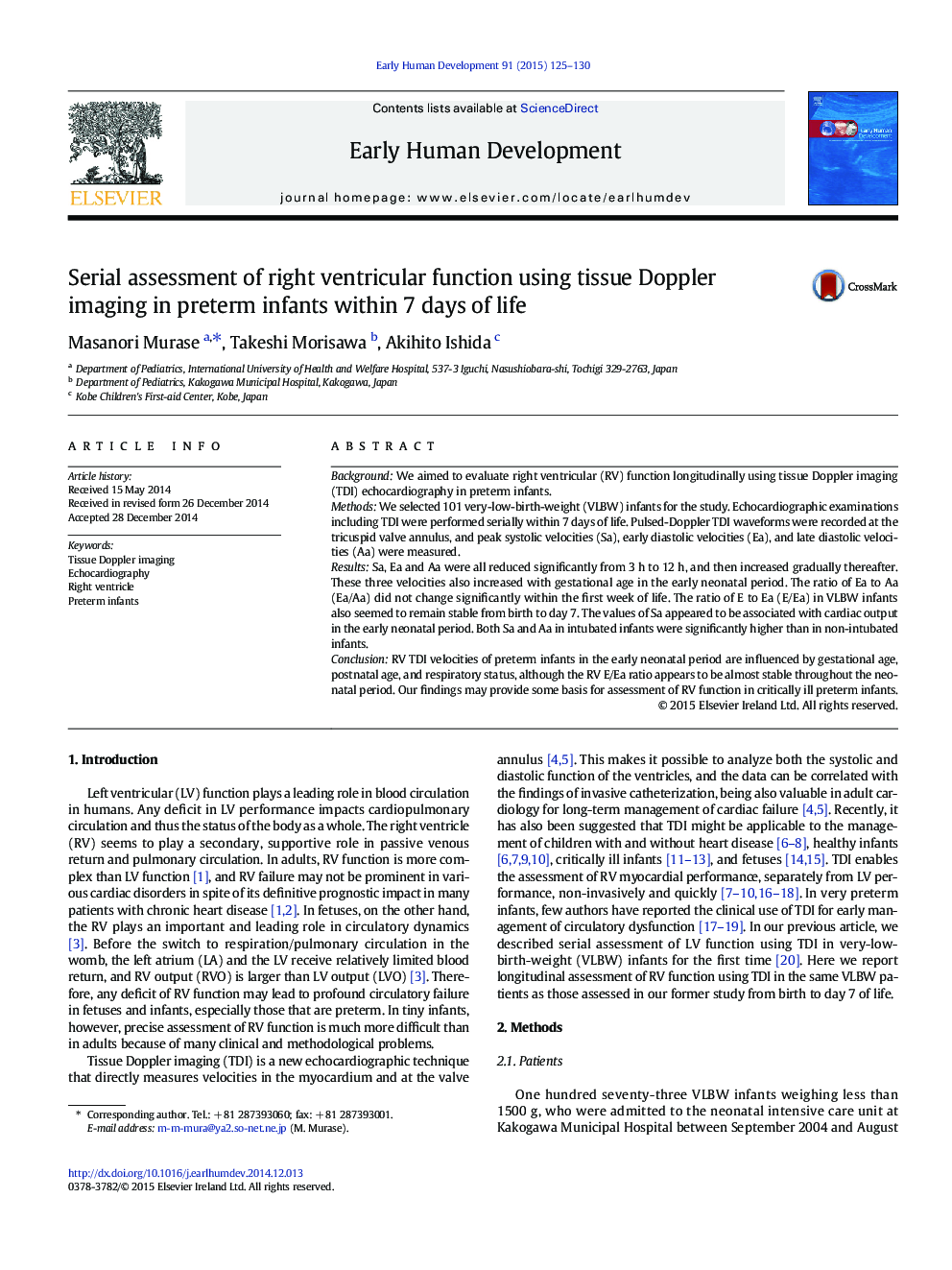| Article ID | Journal | Published Year | Pages | File Type |
|---|---|---|---|---|
| 3916465 | Early Human Development | 2015 | 6 Pages |
•We firstly presented early, longitudinal analysis of right ventricular tissue Doppler imaging in preterm infants.•Peak velocities of tricuspid Sa, Ea and Aa decreased significantly from 3 h to 12 h in preterm infants.•Peak velocities of tricuspid Sa, Ea and Aa differed significantly between different gestational age groups•Both values of tricuspid Sa and Aa in intubated infants were higher than those in non-intubated infants.•Right ventricular ratio of E to Ea (E/Ea) in preterm infants appeared to be stable throughout the early neonatal period.
BackgroundWe aimed to evaluate right ventricular (RV) function longitudinally using tissue Doppler imaging (TDI) echocardiography in preterm infants.MethodsWe selected 101 very-low-birth-weight (VLBW) infants for the study. Echocardiographic examinations including TDI were performed serially within 7 days of life. Pulsed-Doppler TDI waveforms were recorded at the tricuspid valve annulus, and peak systolic velocities (Sa), early diastolic velocities (Ea), and late diastolic velocities (Aa) were measured.ResultsSa, Ea and Aa were all reduced significantly from 3 h to 12 h, and then increased gradually thereafter. These three velocities also increased with gestational age in the early neonatal period. The ratio of Ea to Aa (Ea/Aa) did not change significantly within the first week of life. The ratio of E to Ea (E/Ea) in VLBW infants also seemed to remain stable from birth to day 7. The values of Sa appeared to be associated with cardiac output in the early neonatal period. Both Sa and Aa in intubated infants were significantly higher than in non-intubated infants.ConclusionRV TDI velocities of preterm infants in the early neonatal period are influenced by gestational age, postnatal age, and respiratory status, although the RV E/Ea ratio appears to be almost stable throughout the neonatal period. Our findings may provide some basis for assessment of RV function in critically ill preterm infants.
